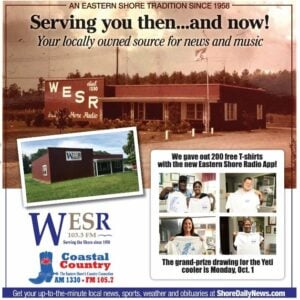This is Steve Rulison bringing you information on Shore friendly living and gardening from the Eastern Shore Master Gardeners and Virginia Cooperative Extension. From my perch near the mouth of Occohannock Creek, I recorded 2 tenths of an inch of rain last week.
This week is the first of a two-part series on native plants and their benefit to our gardens and to the environment we live in.
Native plants developed and spread without human intervention throughout their range, in response to the unique characteristics of a region: the climate, soils, timing of rainfall, drought, and frost. Their further development was also influenced by other species inhabiting the local community with which they formed complex and interdependent relationships. They form the basic component of the living landscape and provide food and shelter specifically adapted to meet the needs of native animal species. Thus, native plants provide a practical and ecologically valuable component of landscaping.
One of their most valuable benefits is that they support native wildlife, performing as “host plants” that provide for all stages of an animal’s life-cycle, including mating and nesting sites, and food sources. Because of this, they attract a greater variety of birds, butterflies, and beneficial insects to the garden. They provide a natural habitat where these animals can find protection from the elements and predators, as well as providing the nutrition needed for a bird or butterfly to thrive.
Because they are well-adapted to the native environment, these plants generally require less water, fertilizer and pesticide, thus adding fewer chemicals to the landscape and maintaining water quality in nearby streams and rivers. They also require less maintenance, and, once established, often surpass non‐natives in ruggedness and resistance to drought, insects, and disease.
The knowledgeable gardener understands that planting non-natives increases the risk of the more desirable natives being overtaken by plants that give back less and require more. These non-native plants, simply cannot sustain a healthy ecosystem. This gardener also knows that it is important to plant a diversity of vegetative layers, going for a 3-dimensional effect by adding depth, starting with trees that provide a high overhead canopy down to the lowly ground-cover plant. The mid-layer, or “understory,” is the most critical to supporting wildlife by providing cover from weather and predators, nectar sources for insects, nuts and berries for birds and mammals, and places to raise young.
Next week I will continue this topic by giving you information on natives of the Coastal Plain region.
For answers to Gardening questions and more, call your local Accomack or Northampton County Extension Office. Here on the Shore call either 678-7946 or 787-1361.
.













